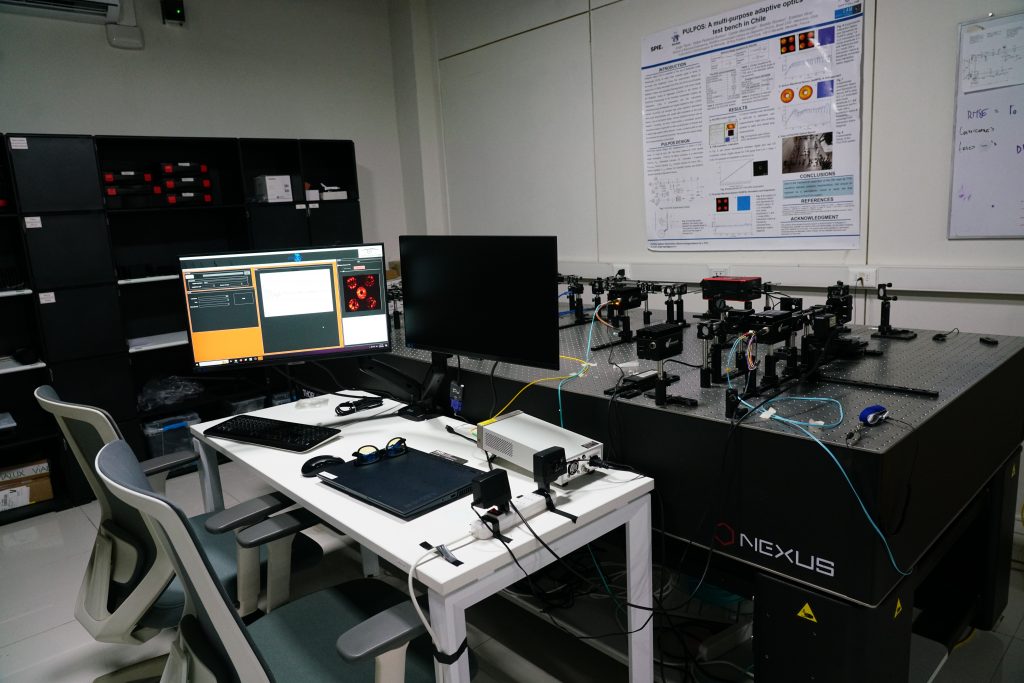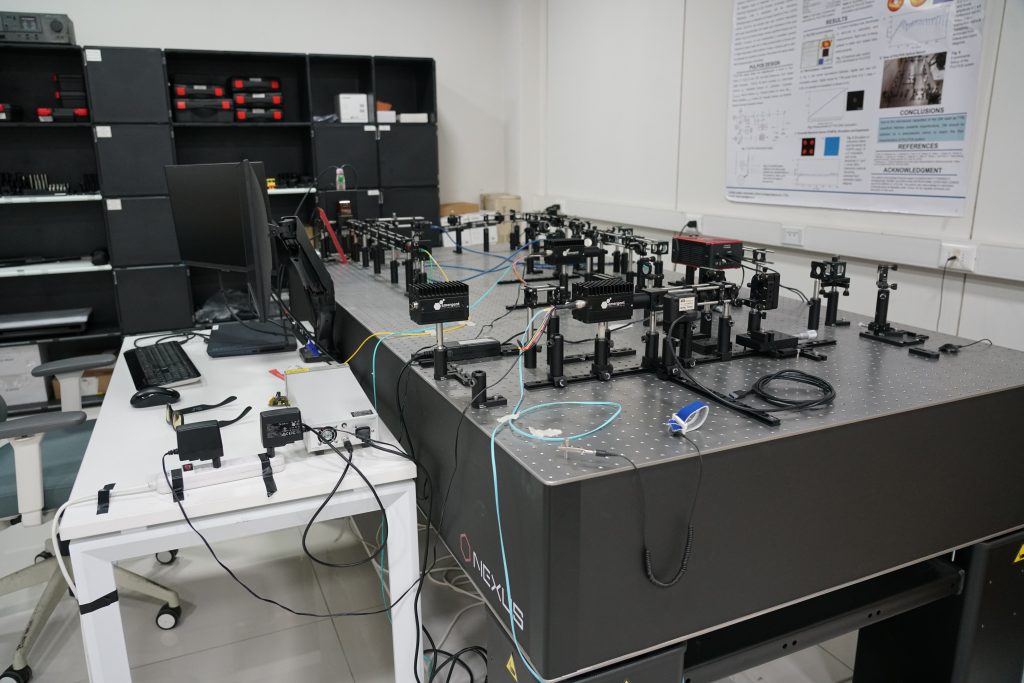This awarded GEMINI project will allow the acquisition of a tip-tilt mirror a key piece to obtain clear images of the cosmos.
A tip-tilt mirror for PULPOS adaptive optics test bench: enabling advanced wavefront sensing research – is the GEMINI project 32220027 awarded to Professor Esteban Vera and the post-doc researcher Jorge Tapia, from PUCV’s School of Electrical Engineering. With funding of US $25K given by the Chilean Agencia Nacional de Investigación y Desarrollo (ANID).
Atmospheric turbulence is the biggest challenge that is presented in astronomical observation from The Earth. Said phenomenon causes optical aberrations when observing the cosmos and doesn’t allow you to obtain clear images. To correct the effects of the atmosphere in the astronomical images, you must apply adaptive optics (AO) techniques.
The advances in this area are crucial for the new generation of Extremely Large Telescopes (ELTs) that are about to be installed in the world, two of them in Chile. On Optolab, we have developed an AO bench called PULPOS, unique in the country, that gives us the possibility to explore different wavefront sensors, estimating the aberrations caused by the atmosphere and compensating, thus obtaining clean images.


Optic bench PULPOS in PUCV Optoelectronics Laboratory, Optolab.
This adaptive optics system is composed of 4 arms for different types of wavefront sensors that allow to characterize mainly 2 variables, sensibility and linearity.
If we go into detail we can say that we use different types of pyramidal sensors, for example, the 4-face pyramid that improves considerably the sensitivity, and also the axicon, which is a pyramid of infinite sides. To improve the linearity we must do modulation over the pyramid, said modulation must meet the Nyquist criteria, which means that the speed of capture of the CMOS camera must be at least two times the modulation frequency. To reach the required precision by the ELTs we need to improve them.
Currently, in PULPOS, to improve the linearity we are using a low-cost deformable mirror to do modulation, however, the modulation mirror frequency is low and also introduces aberrations even when flattening. In the end, it brings more challenges and problems into the sample capture systems, rather than solutions.
That’s why with this GEMINI project that was awarded to us, we will be able to get a real tip-tilt mirror, which will improve the linearity of the system fulfilling what Nyquist criteria establishes.
In this manner, we will form human capital trained in advanced AO, that specializes in the tip-tilt modulation system, being trained and ready for the arrival of the Extremely Large Telescopes that require management on this technology.

